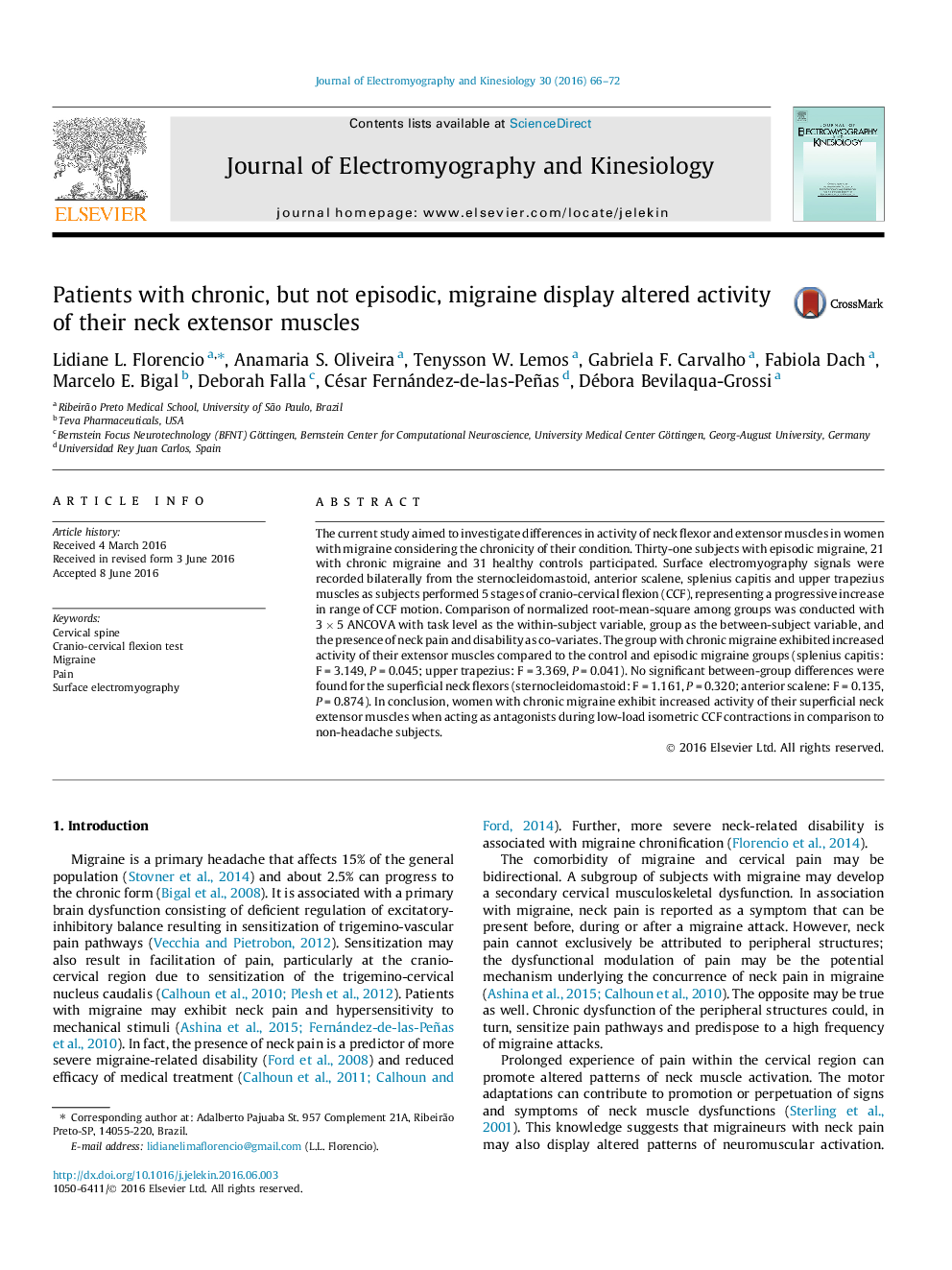| Article ID | Journal | Published Year | Pages | File Type |
|---|---|---|---|---|
| 4064380 | Journal of Electromyography and Kinesiology | 2016 | 7 Pages |
The current study aimed to investigate differences in activity of neck flexor and extensor muscles in women with migraine considering the chronicity of their condition. Thirty-one subjects with episodic migraine, 21 with chronic migraine and 31 healthy controls participated. Surface electromyography signals were recorded bilaterally from the sternocleidomastoid, anterior scalene, splenius capitis and upper trapezius muscles as subjects performed 5 stages of cranio-cervical flexion (CCF), representing a progressive increase in range of CCF motion. Comparison of normalized root-mean-square among groups was conducted with 3 × 5 ANCOVA with task level as the within-subject variable, group as the between-subject variable, and the presence of neck pain and disability as co-variates. The group with chronic migraine exhibited increased activity of their extensor muscles compared to the control and episodic migraine groups (splenius capitis: F = 3.149, P = 0.045; upper trapezius: F = 3.369, P = 0.041). No significant between-group differences were found for the superficial neck flexors (sternocleidomastoid: F = 1.161, P = 0.320; anterior scalene: F = 0.135, P = 0.874). In conclusion, women with chronic migraine exhibit increased activity of their superficial neck extensor muscles when acting as antagonists during low-load isometric CCF contractions in comparison to non-headache subjects.
